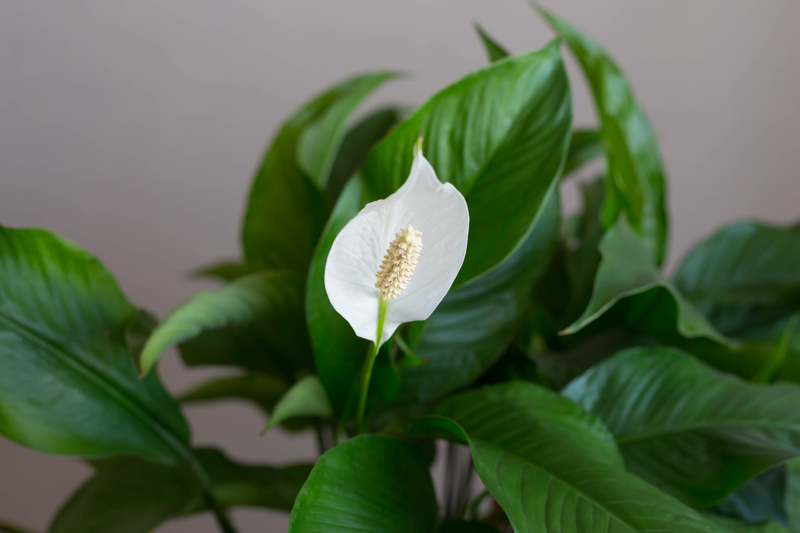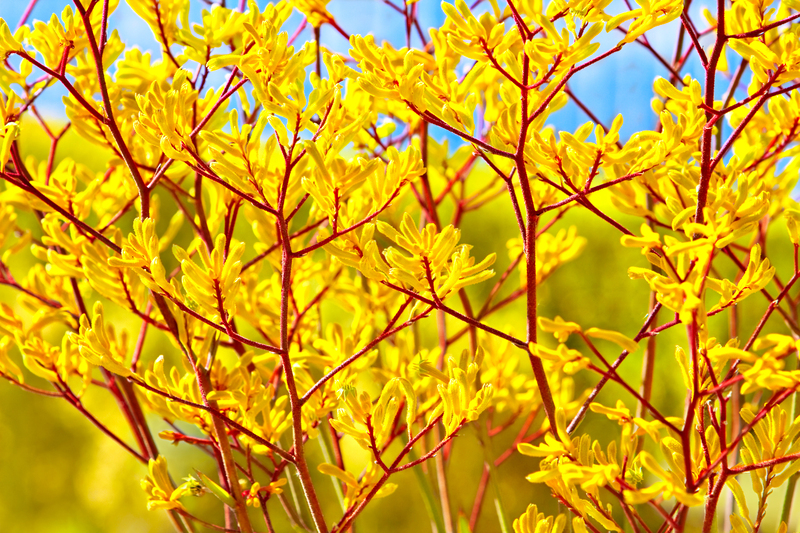Cultivating a Harmonious Garden with Your Four-Legged Friend
Posted on 18/08/2025
Cultivating a Harmonious Garden with Your Four-Legged Friend
Gardening is often seen as a peaceful sanctuary--a place to unwind, nurture plants, and take in the beauty of the outdoors. For pet owners, especially those with dogs, this space becomes even more special. Cultivating a harmonious garden with your four-legged friend is a rewarding endeavor that combines the joy of nature with the companionship of your beloved pet. In this comprehensive guide, you'll discover strategies, tips, and creative ideas to ensure your garden is a safe, stimulating, and beautiful haven for everyone in your household--paws included!
Why Build a Pet-Friendly Garden?
Creating a harmonious garden for pets isn't just about keeping plants safe from curious noses or wagging tails. It's about fostering an environment where your dog can play, explore, and relax without compromising the aesthetics or health of your garden. Some key benefits include:
- Physical and mental stimulation for your dog
- Minimized risk of toxic plant exposure
- Less damage to garden beds and lawns
- Possibility for shared outdoor enjoyment
- Opportunities for fun pet activities and training
With thoughtful planning, your outdoor space can become an oasis where both plants and pets can thrive in perfect harmony.

Understanding Your Dog's Garden Behavior
Before making any changes, it's essential to observe your four-legged friend's natural behaviors in the yard. Some common behaviors include:
- Digging in soft soil or mulch
- Chewing or munching on leaves and stems
- Lounging or rolling on the grass
- Running along the fence or established paths
- Marking territory on prominent plants
Identifying these habits will help you design a garden that channels your dog's energy positively, preventing damage to your favorite plants and minimizing frustration.
Designing a Dog-Friendly Garden Layout
1. Create Clear Pathways
Dogs love to patrol their territory. Establish dedicated paths around the garden using materials like soft gravel, mulch, or flagstone. These trails not only satisfy a dog's instinctive urge to explore but also protect more fragile plants by directing foot traffic away from delicate areas.
2. Fence and Boundaries
Use fencing to define spaces. A well-placed, secure garden fence keeps your dog safely within bounds while protecting sensitive beds. Consider adding lower barriers or decorative edges around particularly vulnerable sections.
3. Designated Dig Zones
If your four-legged companion is a digger, allocate a "dig pit" filled with sand or loose soil. Encourage digging in this area by burying toys or treats and praising your dog for using the zone. This redirects energy away from plant beds.
4. Provide Shade and Shelter
Create cool retreats by planting trees or installing shade cloths. Dogs are susceptible to overheating, and a shaded nook ensures they can enjoy the garden even during warmer months. Add a weatherproof doghouse, hammock, or shaded seating as a bonus.
5. Water Features
Many dogs are fascinated by water. Shallow bubbling fountains or small ponds (with safe, sloped sides) can offer hours of entertainment while enhancing the tranquil garden atmosphere. Ensure your water features are easy to clean and accessible for pets.
Choosing Pet-Safe Plants for a Harmonious Garden
One of the most crucial steps in cultivating a harmonious garden with your dog is choosing non-toxic and pet-safe plants. Some common ornamental and even edible plants are hazardous to dogs. Before buying new additions or landscaping, research plant toxicity thoroughly.
Pet-Safe Plant Options
- Sunflowers
- Rosemary
- Snapdragons
- Marigolds (Tagetes)
- Camellias
- Basil
- Fuchsias
- Petunias
- Spider plants
- Lavender (in moderation)
Plants to Avoid
- Sago palm
- Azaleas
- Oleander
- Tulips and daffodils bulbs
- Lilies
- Foxglove
- Hydrangea
- Castor bean
If you already have potentially toxic plants, consider relocating them to fenced-off areas, or replace them with safer alternatives to minimize the risk of accidental poisoning.
Integrated Pest Management--Safe for Pups and Plants
Routine pest control is a must for every thriving garden. However, many commercial pesticides, herbicides, and fertilizers are dangerous to your furry companion. Strive for organic and pet-friendly solutions:
- Introduce beneficial insects like ladybugs and lacewings
- Use companion planting to naturally deter pests
- Handpick pests when possible
- Create homemade sprays with neem oil, diluted soap, or garlic
- Apply non-toxic mulch like cedar or straw
Always store garden chemicals out of reach and avoid using cocoa mulch, which is toxic to dogs.
Training and Setting Boundaries in the Garden
Training is pivotal to maintaining a peaceful, garden-friendly relationship with your dog. Consistent commands and positive reinforcement provide structure and protect both your plants and pet.
Tips for Garden Training:
- Supervise and redirect undesired behaviors (digging, chewing, trampling).
- Use praise and treats for staying on designated paths or areas.
- Teach the "leave it" and "stay" commands for emergencies.
- Clarify off-limits sections with visual and physical cues (border fences, decorative rocks).
Patience and repetition help your four-legged friend adapt to new rules, cultivating lasting harmony in your shared space.
Fun Garden Enrichment Activities for Dogs
Make your garden a source of enrichment--not only for beauty but for engagement and exercise. Here are a few creative ideas to keep your dog entertained and happy:
- Obstacle course: Use safe garden objects to create a mini agility course.
- Treasure hunts: Hide treats or favorite toys for your dog to sniff out.
- Sensory plants: Include pet-safe plants with interesting scents and textures.
- Digging box: Bury toys or balls in a sandbox for active fun.
- Shallow pool: Offer a splash zone on warm days using a kid's pool or water feature.
Active play not only enriches your dog's life but deepens your bond, making the garden a truly shared haven.
Garden Maintenance Tips for Pet Owners
Regular maintenance is essential for both thriving plant life and a safe pet environment. Here's what you need to know:
- Clean up fallen leaves, fruits, or seeds--some may upset your dog's stomach or attract pests.
- Inspect for signs of digging or chewing and repair any damage promptly.
- Rinse off paws after outdoor play to prevent tracking mud, pollen, or chemicals indoors.
- Regularly check fences and gates for security and any sharp edges.
- Schedule routine vet checks to ensure your dog is protected against garden-related parasites.
Fastidious upkeep not only preserves garden health but ensures ongoing safety for your pet--preventing injuries and reducing exposure to pathogens.
Creative DIY Garden Projects for Dog Lovers
Looking to personalize your harmonious garden even further? Here are some DIY projects that celebrate the relationship between gardener and canine:
- Custom dog stepping stones--let your pet leave a "pawprint" legacy.
- Personalized water bowl stand--stylishly keep your dog hydrated outdoors.
- Handmade dog-safe herb garden--dedicate a planter to parsley, basil, and rosemary.
- Decorative agility tunnel--use colorful materials to craft a fun hideaway or play tunnel.
- Shade sail installation--DIY a modern sunshield over your dog's favorite lounging spot.
These projects make wonderful weekend activities and allow for a personalized touch that honors your four-legged companion.
Common Missteps and How to Avoid Them
Even the most careful pet owners can overlook potential hazards. Here are common mistakes and how to prevent them:
- Forgetting to secure gates or fences--always check for gaps or weak points.
- Leaving tools and chemicals accessible--store securely after use.
- Neglecting shady shelter in summer--supplement with shade sails or trees.
- Choosing poisonous or spiky plants--opt for gentle, pet-safe foliage.
- Ignoring signs of boredom--add toys, play zones, and sensory stimulation.
Awareness and preventative steps safeguard your harmonious garden and make it an inviting space for all.
Seasonal Considerations for Pet-Friendly Gardens
Different seasons present unique challenges and opportunities for those seeking to cultivate a harmonious garden with their dog:
Spring
- Watch for spring allergies (both human and canine).
- Introduce new plants or beds gradually to avoid overwhelming your dog.
Summer
- Focus on hydration and shaded rest areas.
- Avoid walks and outdoor play during peak heat.
Autumn
- Clear falling leaves and fruits promptly.
- Watch for mushrooms or mold growth in damp areas.
Winter
- Check for icy patches or salt used on paths (opt for pet-safe ice melts).
- Provide extra insulation for both sensitive plants and your dog's shelter.

Balancing Aesthetics and Practicality
You don't have to sacrifice beauty for safety. A harmonious garden can still feature lush borders, vibrant flower beds, and artistic touches. Complement sturdy, dog-resistant plants with decorative container gardens or vertical planters. Use hardscape materials like stone, wood, and metal to intersperse drama while maintaining integrity under paws and play.
Work with your dog--not against them--and your garden will flourish as a collaborative masterpiece.
Final Thoughts: Nurture, Coexist, and Enjoy
Ultimately, cultivating a harmonious garden with your four-legged friend is about compromise, creativity, and compassion. It's an ongoing process--one that deepens your bond and transforms the garden into a shared sanctuary.
With safe plants, thoughtful landscape design, proactive maintenance, and a little canine training, your garden can be both beautiful and dog-friendly. Embrace the journey, enjoy the moments, and watch as blossoms and wagging tails grow side by side in perfect balance.
Happy gardening to you and your furry companion!

